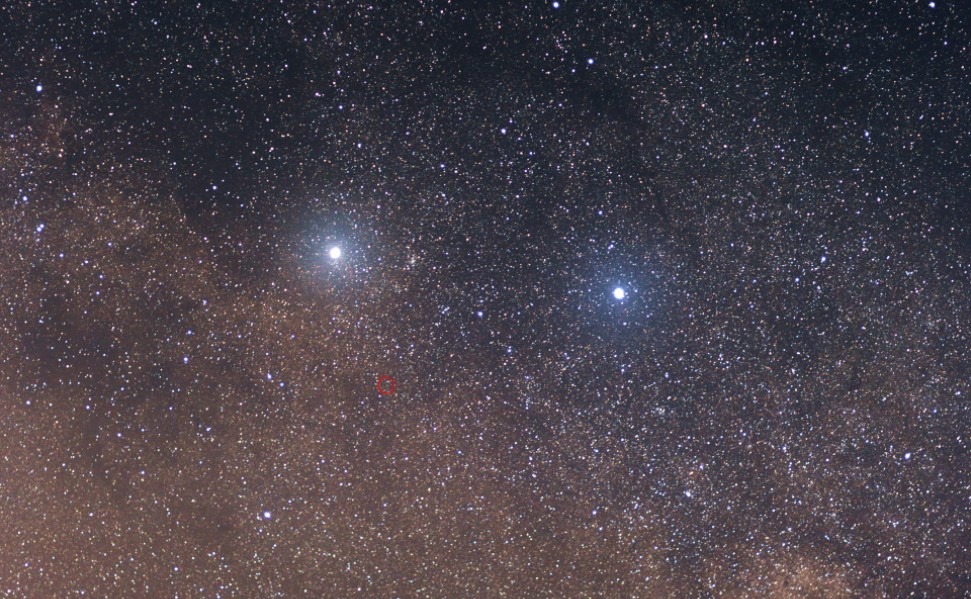Astronomers use light-years to measure or calculate the distance in space. It is known as the distance traveled by a beam of light for one year — a distance of six trillion miles. A light-year is typically greater and more extensive than a mile or kilometer.
The universe outside Earth is so enormous that units of measurement that people use in their daily lives can become massive. Lengths between the planets in our solar system, and particularly between stars, can become unmanageable when represented in our standard units of measure such as miles and kilometers. As a result, for celestial dimensions, scientists use whole different units of measurement — light-years, astronomical units, and parsecs.
WHY DO ASTRONOMERS MEASURE COSMIC DISTANCES THIS WAY?
Why is the measurement of the cosmic distances done this way? First and foremost, light is crucial. All light moves at the same rate, around 670 million miles per hour, throughout the entire universe.
You don’t usually consider light moving elsewhere since the light appears when we turn on your switch! You wouldn’t even feel the need to wait for the lights to turn on. It happens in an instant. Except it isn’t instant; it’s simply ridiculously fast.
Astronomical units (AU) are a significant unit of measurement for measuring distance in our solar system. They simplify evaluating the lengths and distances between different celestial objects. Knowing how many times and how fast planets orbit the Sun becomes easy because of these astronomical units.
When you measure the distance between the Sun and Earth’s orbit, you will get approximately 150 million kilometers, and when expressed in miles, it is 93 million. However, if you measure it using astronomical units, the 886,000,000-mile or the 1,400,000,000-kilometer distance from the Sun towards the orbit of Saturn is far more feasible since it’s only stated as 9.5 AU. As a result, astronomical units are an excellent technique for reducing vast astronomical numbers towards a more reasonable scale.
WHAT ARE LIGHT-YEARS FOR?
Astronomers utilize light-years to measure far more enormous distances or what you commonly know as astronomical distances. A light-year is what you know as the distance traveled by a single photon of light for one year. This is approximately six trillion miles. Nine trillion, when expressed in kilometers, or 63,000, when expressed in astronomical units.
The speed of light is consistent throughout the universe, and its distance is precise. Light travels at 670,616,629 miles per hour or 1,079,252,849 kilometers per hour in a vacuum, a place in space below atmospheric pressure. When calculating the distance traveled in a light-year, the speed is multiplied by the total hours in a year, 8,766. As a result, one light-year is equivalent to 5,878,625,370,000 miles or 9.5 trillion kilometer.
If you think of it, this may appear to be a considerable distance, but the vastness of the cosmos makes it smaller. According to the estimated calculations of astronomers, the known universe has a diameter of 28 billion light-years.
A light-year is a distance you could reach in one whole year if the speed you travel is the same as that of the light, which is 186,000 miles or 300,000 kilometers per second. Light years, the same as AU, make cosmic distances more comprehensible.
The closest star cluster to the Earth, for instance, is the triple star system of Alpha Centauri, which is around 4.3 light-years away or 272,000 astronomical units. That’s a more reasonable figure than 25 trillion miles or 40 trillion kilometers.
The primary reason why astronomers use light-years is that the distances they work within the known universe are enormous. They run into massive numbers if they keep using miles or kilometers when calculating celestial distances. For instance, when calculating the length of the Earth to the nearest star, a faint red dwarf star named Proxima Centauri, it would be 24,000,000,000,000 miles away.
The Orion Nebula, the nearest star-forming zone to the Earth in its celestial neighborhood, is only 7,861,000,000,000,000 miles distant, or 1,300 light-years away when measured in light-years. The galaxy’s core is around 27,000 light-years away. The Andromeda galaxy, the closest spiral galaxy to the planet, is 2.5 million light-years away.
Perhaps almost all of the most distant galaxies visible to the Earth are millions and billions of light-years away. When talking about other galaxies, the galaxy GN-z11 can be located at 13.4 billion light-years away from the Earth. It is said to be the furthest observable galaxy from the planet.
Aside from that, another great use of Light years is that they provide some essential information regarding solar system distances. They help tell that the Sun is approximately eight light minutes away from Earth. The same as degrees, the light-year can be divided into smaller units such as light seconds, light minutes, and light hours.
Scientists often use these measurements when discussing communications with deep-space spacecraft, artificial satellites, or rovers. Because of the limited light speed, sending a signal to the Curiosity rover orbiting Mars may take longer than 20 minutes.
And since light from different objects moves at the speed of light, whether you see the Sun, other planets, or a faraway star, you are seeing it exactly as it was at the moment the light departed it — whether that was 8 minutes, ten minutes, or 5.3 years ago. And this is central to the notion that when we look farther out into space, we go farther back in time. It is like seeing all the stars in the night sky at various historical moments. Some may be from a few years ago, others thousands of years ago, and you see them all at the same time.
THE ALTERNATIVE FOR LIGHT-YEARS
Ultimately, aside from light-years, there are parsecs. Astronomers also use parsecs as a substitute to the light-year. A parsec, which stands for parallax-second, is derived from triangulation to estimate the length between stars. Once the distance of light-years separating objects reaches thousands or millions, astronomers tend to use this unit of measure.
For a deeper understanding, parsecs is the distance to a star whose actual location in the sky moves by 1 arcsecond after Earth circles midway all around the Sun. For reference, one parsec is equivalent to 3.26 light-years. The history of this unit of measurement is somewhat more complex, but it has something to do with how scientists estimate the distances of stars in the sky.
You may not know it, but the universe grows larger and more prominent in time. Whatever they use — it may be light-years, parsecs, or AU– astronomers will keep using these different units of measure to calculate the extensive cosmic distances of our celestial bodies in this vast universe.



